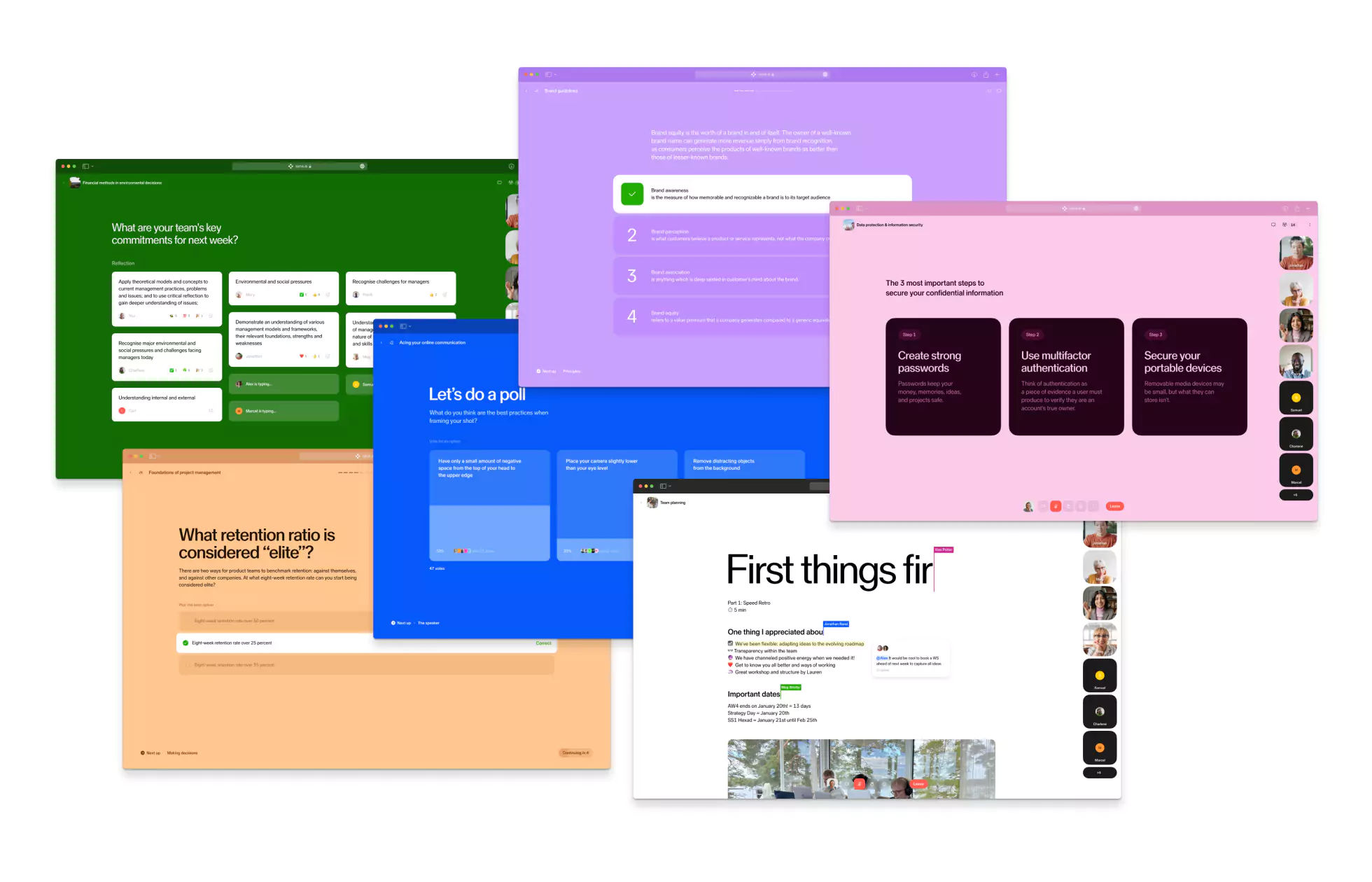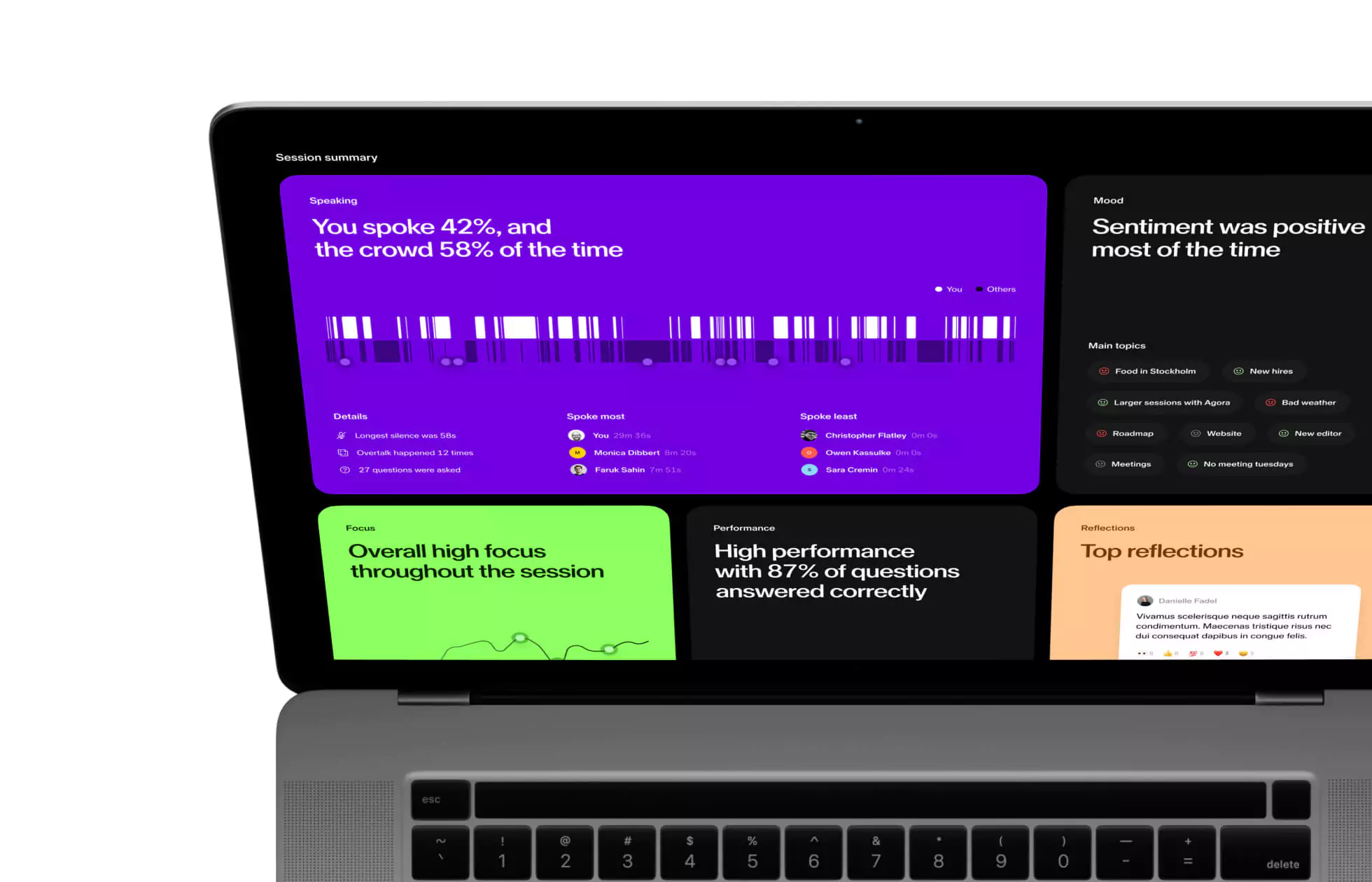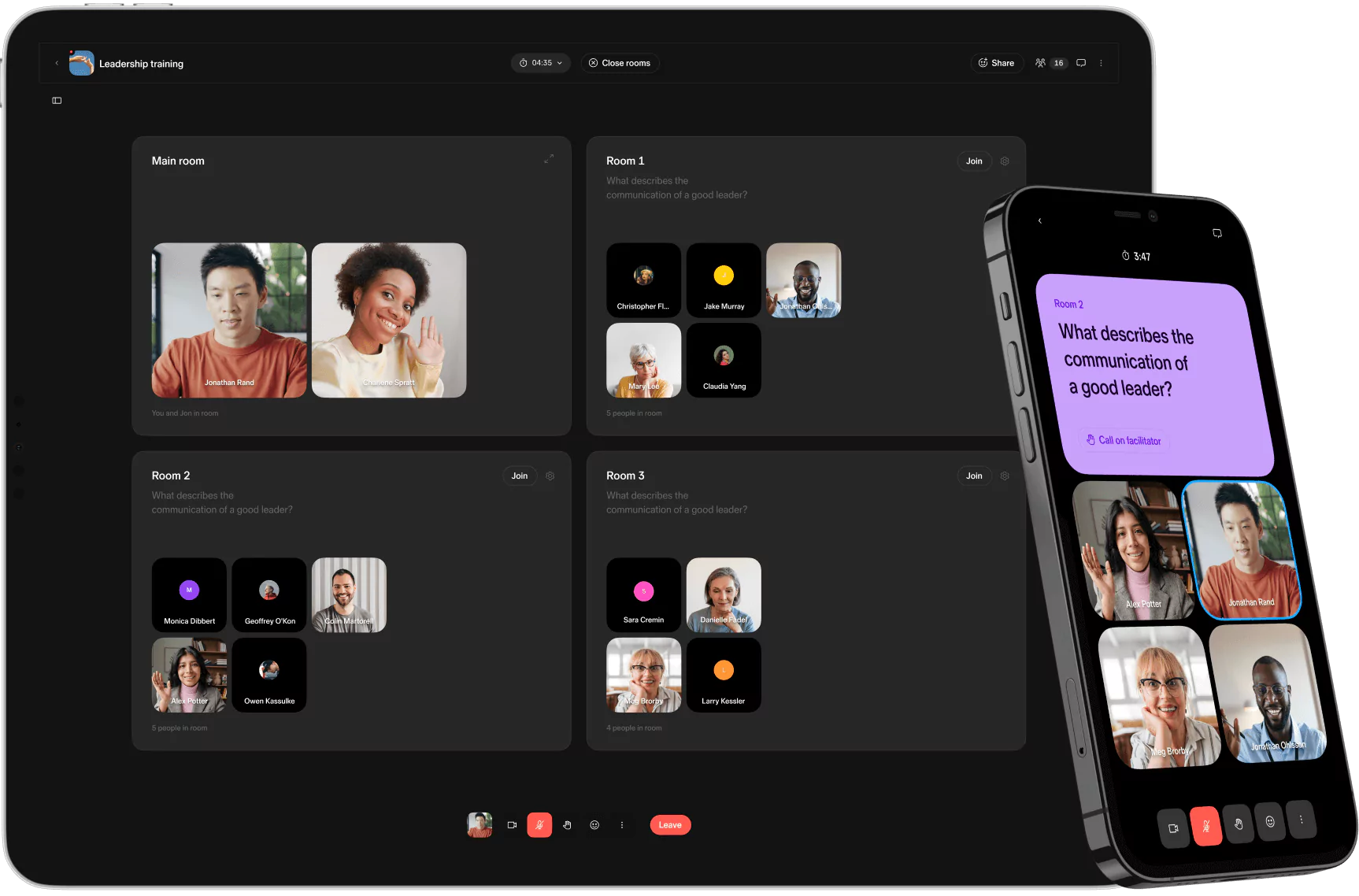It's time to reimagine blended learning

Blended learning as we know it isn't fit for purpose
What is blended learning?
Blended learning is a long-standing L&D concept. Some chart its origins back to the 1960s; most agree its definition has stayed the same for at least a decade.
Historically, blended learning has been about leveraging online and in-person learning:
- In-person classroom training—e.g., lectures, presentations, instructor-led sessions
- Online learning activities—e.g., on-demand videos, e-learning, articles
When L&D has combined these two approaches, we increased engagement and learning outcomes. Or at least we did. Before the world turned upside down.
Why does the blended learning definition need to evolve?
The pandemic transformed how we work and live overnight. Work is no longer a place we go; it's something we do. The pandemic showed us that a more flexible approach was possible, and much of the world is embracing it. According to Microsoft's 2022 Work Trend Index, 38% of employees now work in a hybrid office.
This is our new reality. A working world that's increasingly distributed, flexible, digital, hybrid.
Well, new realities always require new ways of learning.
In a hybrid world, the in-person plus online learning paradigm is no longer fit for purpose. Instead of asking where learning should take place, we should be asking how it takes place.
It's time to shift perspective.
The new blended learning is personalized and collaborative
How do humans learn best? As research and technology have evolved, two competing schools of thought have emerged:
- Personalized learning: software responds to the needs of each individual at scale
- Collaborative learning: groups create powerful social dynamics
At Sana, we believe it doesn't have to be either-or. And that the future of blended learning lies in bringing these two modalities together. Here's why.
Personalized learning is scalable and empowering
Personalized learning drives impact by tailoring the learning experience to each individual's needs. Examples include:
- Receiving 1:1 tutoring with a subject matter expert
- Taking a course on an adaptive learning platform
- Receiving tailored course recommendations based on skill level and interests
Personalized learning is effective because it accounts for everyone's varying degrees of knowledge and understanding. And it can do that at scale, thanks to Artificial Intelligence. At Sana, we've seen that personalized learning helps people learn 50% faster and retain knowledge three times longer compared to one-size-fits-all learning.
In addition to being effective, personalized learning is empowering. We feel autonomous and in control because we can learn on-demand, whenever the mood strikes.
That said, every learning modality has its limitations. The greatest one for personalized learning is that it requires a lot of self-motivation. Taking a non-mandatory course during a busy working week? Even if that course adapts to your needs, it's still a lot to ask. Especially when that course requires a lot of solo reading. So even if personalized learning allows us to be autonomous and flexible, there's little urgency and accountability.
This is where collaborative learning comes in.
Collaborative learning drives urgency and accountability
Collaborative learning leverages the social dynamics of learning together.
Imagine a live session where leaders share and apply top tips for building high-performing teams. Or an asynchronous forum where engineers are trying to solve a complicated coding bug.
At their best, these kinds of group interactions burst with debate, discussion, and ideas. That's what makes them so compelling. Whether you're on a problem as a team or answering someone's question—you step up and become accountable. That accountability leads to higher engagement and completion rates, especially when combined with a fixed deadline. Take cohort-based learning programs, which have a start and end date. They boast completion rates as high as 96%.

Taken together, personalized and collaborative learning form a holistic learning experience. They give us the best of both worlds. We get the freedom to learn according to our unique schedule and needs. While also being motivated and held accountable by others.
So what does that experience look like in practice?
Bringing the new blended learning to life
Imagine you're a project manager working in a hybrid startup. You're looking to build skills in agile ways of working, so you've enrolled in a blended learning journey with colleagues across various locations.
Close knowledge gaps with personalized courses
The journey starts with a personalized pre-read course on core agile methodologies. You already know some basic concepts, so the platform skips you straight to the new material. That saved you some valuable time. Then, when an unfamiliar topic starts tripping you up, you get quiz questions until you get the right answers.
Deepen understanding with live group sessions
After taking the pre-read course, it's time for a group discussion. You meet with your peers to explore the real-world applications of these methodologies—debating their strengths and limitations. Because the session is live and collaborative, the group energy is soaring. You answer polls and quizzes, then split into breakout rooms to dig into the most controversial topics. Before you know it, time's up. But the learning doesn't stop there.

Sustain interest with tailored recommendations and social features
Straight after the group session, you receive an email. That email contains a summary of the session, recommended articles for further reading, and a link to the next pre-read course. Inspired to continue, you jump straight in. Already you can see comments and questions from your peers in the chat—plenty of topics for next week's group session.
And so the journey continues.
This is what the future of blended learning looks like. Personalized, collaborative, powerful. And it's even more powerful when it all takes place in one learning platform.
Blended learning lives best under one roof
Historically, L&D has needed multiple tools to make blended learning engaging. Articulate, Storyline 360, Zoom, Miro, Kahoot, LinkedIn Learning. The list goes on.
This kind of fragmented learning stack is complicated and inefficient. Most importantly, it doesn't scale.
Here are just two of the top benefits of bringing blended learning into one platform.
1. A more seamless experience
Tab-switching is like context-switching: it's time-consuming and energy-draining. The more tools you have, the more friction you introduce for everyone involved. The more friction you introduce, the higher your drop-off rates.
Sana solves this problem. You can create, experience, and manage blended learning journeys in one place. Build personalized courses that adapt to each individual's knowledge level. Connect those courses to live collaborative sessions. And in those sessions, engage your hybrid and remote team members with natively-built interactive features—including polls, quizzes, sticky notes, and video streaming. Whatever blended experience you want to create, you can schedule it all and set automated Slack and email reminders. The result? An experience that's smooth for learners, facilitators, and admins alike.
2. Data that's actually actionable
Blended learning journeys usually result in scattered data. Quiz results here, session attendance there, and completion rates somewhere else. How are you supposed to understand that data, let alone act on it?
Sana does both of these for you. Learner performance and completion rates are available at a glance for all live sessions and self-paced courses—at the group and individual level. During a live session, facilitators can see who is answering and skipping polls, as well as the results of quiz questions. Making it easier to adapt the session in real-time. And after the session, Sana will provide facilitators with an attendance and results breakdown. So they can plan their next session accordingly.

The new blended learning is personalized and collaborative. And most effective when it all lives under one roof. In an increasingly distributed, hybrid world, this is the type of learning organizations should embrace. It meets people where they are, brings them together—and unleashes potential every step of the way.
Give your teams the experience they deserve
Explore blended learning in Sana
